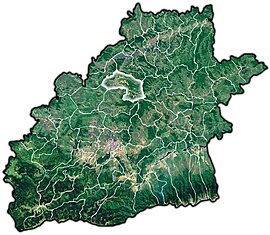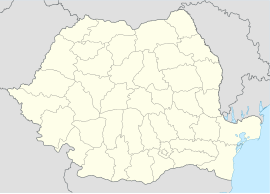Șeica Mare: Difference between revisions
Citation bot (talk | contribs) Alter: title. | Use this bot. Report bugs. | Suggested by BrownHairedGirl | #UCB_webform 2059/2066 |
mayor |
||
| Line 1: | Line 1: | ||
{{Update|date=July 2010}} |
{{Update|date=July 2010}} |
||
{{Infobox Romanian subdivision |
{{Infobox Romanian subdivision |
||
|type |
|type = commune |
||
|county |
|county = Sibiu |
||
| ⚫ | |||
|population_total = auto |
|population_total = auto |
||
| |
|image_flag = |
||
|image_shield = |
|||
| ⚫ | |||
|image_skyline=Buia.JPG |
|image_skyline = Buia.JPG |
||
|image_map=Seica Mare jud Sibiu.jpg |
|image_map = Seica Mare jud Sibiu.jpg |
||
|map_caption = Location in Sibiu County |
|||
|leader_name = Nicolae Șușa |
|||
|leader_party = PNL |
|||
|leader_term = 2020–2024 |
|||
|coordinates = {{coord|46|1|N|24|9|E|region:RO|display=it}} |
|coordinates = {{coord|46|1|N|24|9|E|region:RO|display=it}} |
||
}} |
}} |
||
Revision as of 18:14, 7 November 2022
This article needs to be updated. (July 2010) |
Șeica Mare | |
|---|---|
 | |
 Location in Sibiu County | |
| Coordinates: 46°1′N 24°9′E / 46.017°N 24.150°E | |
| Country | Romania |
| County | Sibiu |
| Government | |
| • Mayor (2020–2024) | Nicolae Șușa (PNL) |
| Population (2021-12-01)[1] | 3,925 |
| Time zone | EET/EEST (UTC+2/+3) |
| Vehicle reg. | SB |
Șeica Mare (Template:Lang-de; Template:Lang-hu) is a commune located in Sibiu County, Transylvania, Romania. It is composed of six villages: Boarta, Buia, Mighindoala, Petiș, Șeica Mare and Ștenea. Calvaser (Kaltwasser; Hidegvíz) was also a village until the late 20th century, when it was absorbed by Șeica Mare village.
At the 2011 census, 88.8% of inhabitants were Romanians, 6% were Hungarians, 4.2% were Roma and 1% were Germans.
Villages
Buia village was first attested in a document of 1269, under the name of poss Bulla. In 1918, it had 1167 residents, of whom 736 were Romanians and the rest Germans and Hungarians. By 2002, the population was down to 634: 516 Romanians, 104 Hungarians and three Roma. The village is in the southern part of the commune, linked to Șeica Mare by an 11 km stretch of county road.[2] Farkas Bolyai was born there in 1775.[3]
Mighindoala (Template:Lang-de, meaning "Angels' Valley",[4] Template:Lang-hu) is a small village in the Șeica Mare commune.
As recently as 1975, the village had in excess of 50 houses, but was gradually deserted after the communist regime withdrew infrastructure such as teachers and doctors.[5][6] [citation needed] As of 2004, there were only four people left in this village.[citation needed] There were only about ten buildings standing, including the Protestant church.[citation needed] The Romanian Orthodox church no longer has a roof, and is now abandoned.[7]
The only economic activity is agriculture, very much based on the traditional farming of sheep, cows and horses.[citation needed]
Gallery
-
Ruins of Buia Castle
-
The road on Mighindoala river valley
-
German Church in Mighindoala
-
House in the village
-
The fortified church of Șeica Mare
-
The fortified church of Șeica Mare
-
The fortified church of Șeica Mare
-
The fortified church of Șeica Mare
References
- ^ "Populaţia rezidentă după grupa de vârstă, pe județe și municipii, orașe, comune, la 1 decembrie 2021" (XLS). National Institute of Statistics.
- ^ (in Romanian) Sate aparţinătoare at the Șeica Mare Town Hall site; accessed July 14, 2013
- ^ Barna Szénássy, János Bolyai Appendix, p.220. Elsevier, 1987, ISBN 0-080-87249-2
- ^ "Istru Foundation". Archived from the original on 2011-07-21. Retrieved 2011-05-30.
- ^ see this article
- ^ Article in romanian language here
- ^ see this photo taken from inside the Orthodox Church










